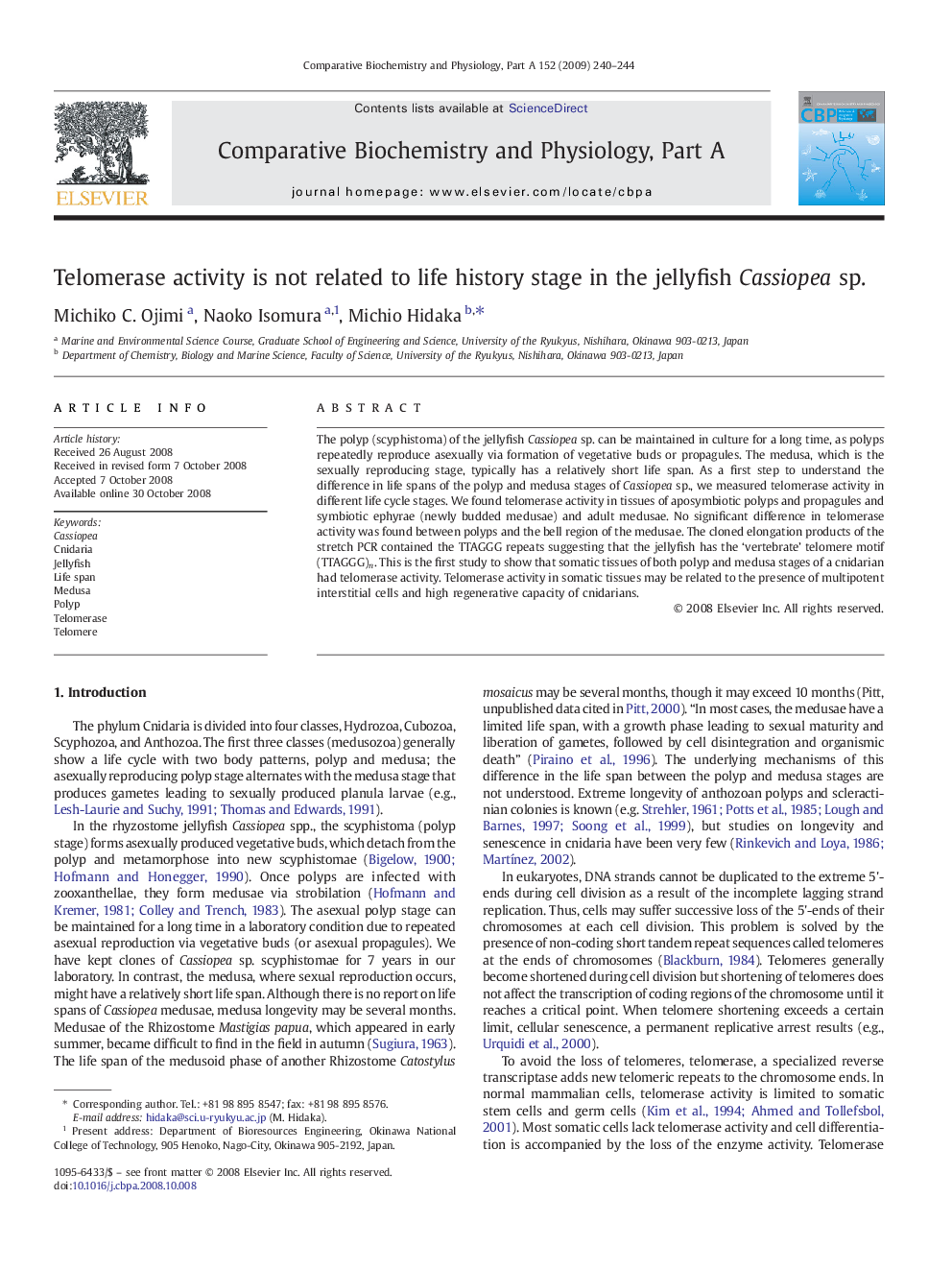| Article ID | Journal | Published Year | Pages | File Type |
|---|---|---|---|---|
| 1973667 | Comparative Biochemistry and Physiology Part A: Molecular & Integrative Physiology | 2009 | 5 Pages |
The polyp (scyphistoma) of the jellyfish Cassiopea sp. can be maintained in culture for a long time, as polyps repeatedly reproduce asexually via formation of vegetative buds or propagules. The medusa, which is the sexually reproducing stage, typically has a relatively short life span. As a first step to understand the difference in life spans of the polyp and medusa stages of Cassiopea sp., we measured telomerase activity in different life cycle stages. We found telomerase activity in tissues of aposymbiotic polyps and propagules and symbiotic ephyrae (newly budded medusae) and adult medusae. No significant difference in telomerase activity was found between polyps and the bell region of the medusae. The cloned elongation products of the stretch PCR contained the TTAGGG repeats suggesting that the jellyfish has the ‘vertebrate’ telomere motif (TTAGGG)n. This is the first study to show that somatic tissues of both polyp and medusa stages of a cnidarian had telomerase activity. Telomerase activity in somatic tissues may be related to the presence of multipotent interstitial cells and high regenerative capacity of cnidarians.
